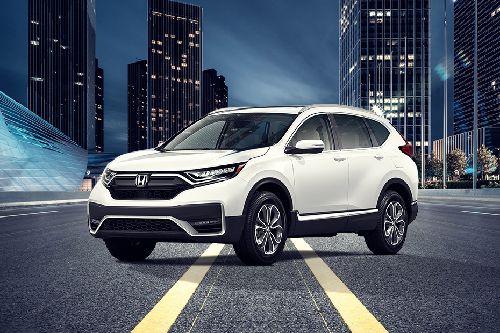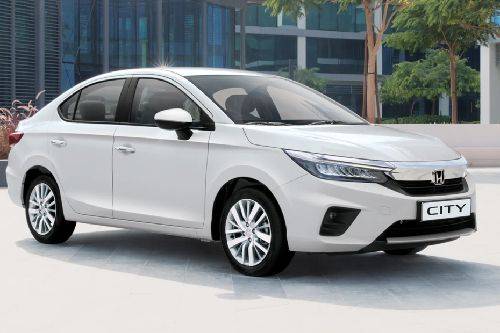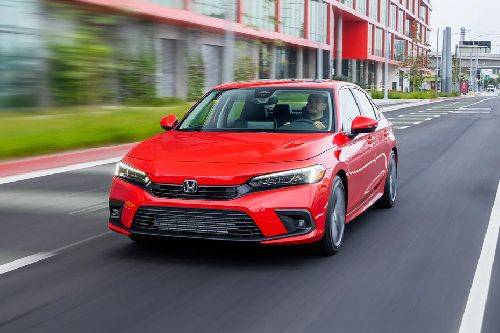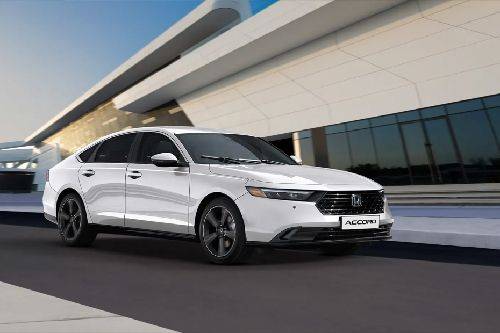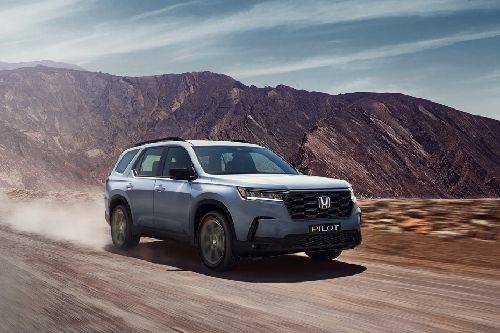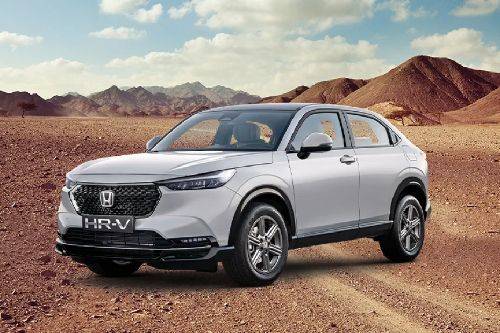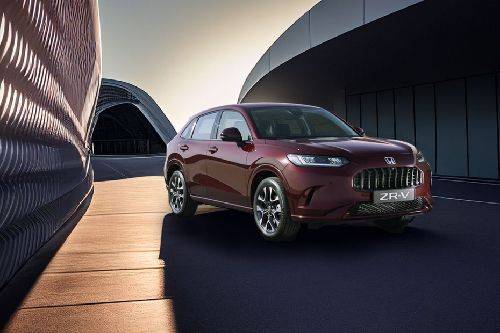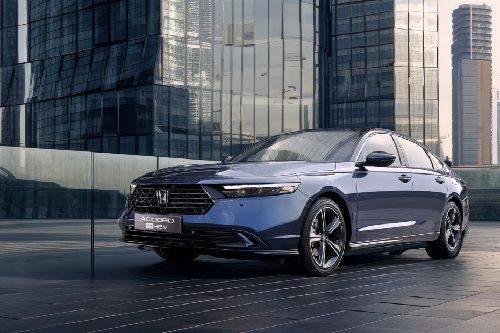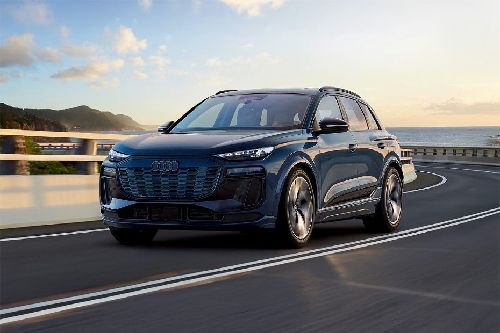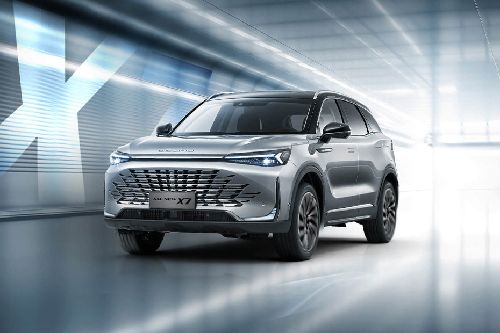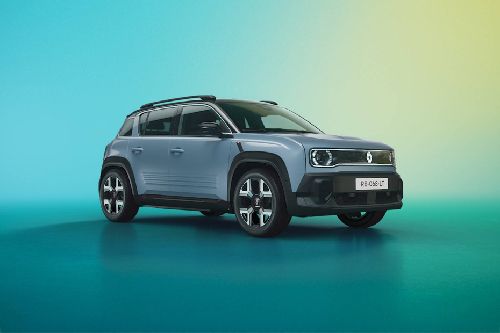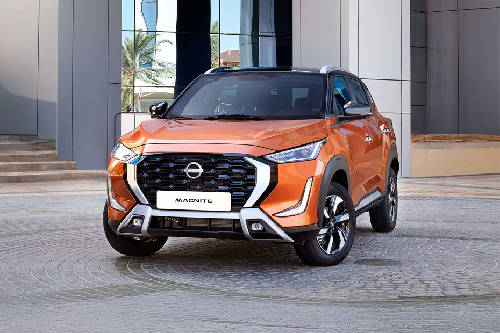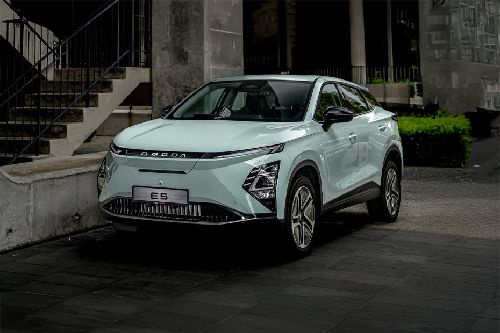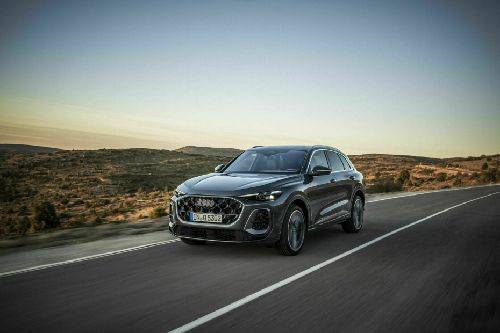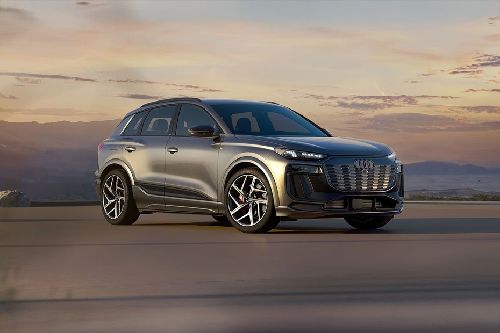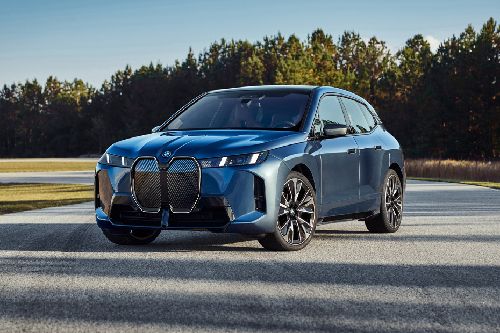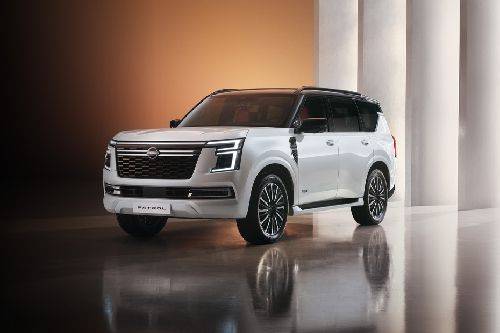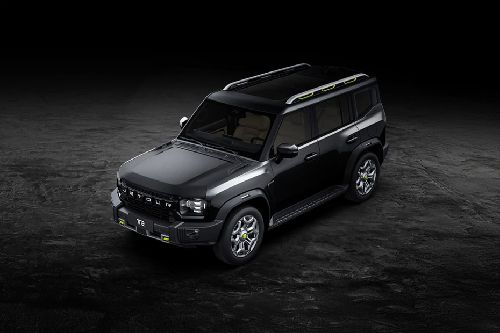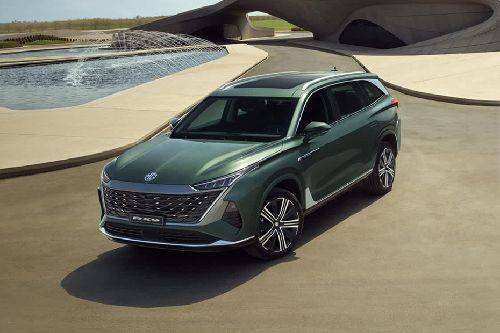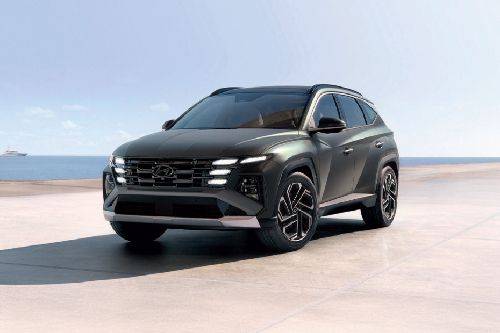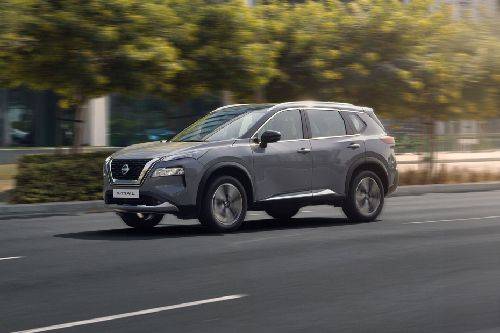Honda CR-V 2024 Comparison: Toyota RAV4, Nissan X-Trail, and Hyundai Tucson

Thanks to high demand and public perception, crossover SUVs rule the roost when it comes to the modern-day personal automobile. In GCC markets such as Saudi Arabia, the hunger for these vehicles only keeps growing with each passing year. One of these highly-successful & well-liked cars is the Honda CR-V 2024.
The CR-V was one of the first of its kind when it was launched in 1995. With only a handful of crossovers in the market back then, Honda paved the way for many to follow. Today, the CR-V is one of the top cars in its segment in KSA, as well as the best-selling Honda crossover/SUV in the world.
 Photo from Honda
Photo from HondaThe compact crossover SUV is built atop the Honda Architecture (or HA). This platform also underpins other cars in the automaker’s line-up like the new Honda Civic, for example. Making the new CR-V so formidable are some factors that play to its advantage. It is longer and wider than the old model by approximately 80 mm and 12 mm, respectively.
In other words, the Honda CR-V 2024 is 4,706 mm long and 1,866 mm wide. The Honda Architecture also results in a wheelbase of 2,700 mm – 40 mm or so longer than before. Then there are the obvious changes made to the exterior, comprising contemporary LED headlights, a larger & cleaner front grille, and a boxier SUV-like profile.
 Photo from Honda
Photo from HondaBringing some of the glamor quotient here are the 10-spoke 18-inch alloy rims, distinctive-looking 3D LED taillights, and a roof-mounted spoiler. The exterior styling of the new Honda CR-V is mature but confident with hints of sportiness and a splurge of practical accommodation. Meanwhile, the well-built interior looks premium and calming mainly due to the unfussy nature of this cabin.
The three rows of seats make the new Honda CR-V a family-friendly SUV for sure, with the split-folding rear seats increasing its versatility. When not in use, the third row can be folded down to free up over 470 liters of cargo space. With a light beige trim, panoramic sunroof, and large windows – the CR-V’s interior doesn’t feel cramped at all.
 Photo from Honda
Photo from HondaThe features set of the Honda CR-V 2024 include a 9-inch infotainment system with navigation and wireless Android Auto & Apple CarPlay. There is wireless charging, dual-zone automatic climate control, paddle shifters, ambient LED lighting, and powered front seats. Not to be left behind are features like active noise cancellation, an 8-speaker audio rig, a head-up display, and Honda Sensing.
Powering the new Honda CR-V in Saudi Arabia is a 1.5-liter turbocharged four-cylinder petrol engine making 190 hp and 243 Nm of torque. The CVT-assisted motor is rated at 15.5 kmpl (6.4 L/100 km) and 14.8 kmpl (6.7 L/100 km) for the 2WD and AWD variants, respectively. Meanwhile, prices range between SAR 144,785 and SAR 187,335.
-
Toyota RAV4 (SAR 98,555–151,455)
Design and interior
Compared to the CR-V, the exterior of the Toyota RAV4 consists of more sharp angles and chiseled panels. Its design, therefore, can seem more busy for some. The bold styling choices, especially up front and the C-pillars, are easily noticeable. The ‘frowning’ grille & lower bumper are peculiar, while the squared wheel arches and a chunky rear bumper add more ruggedness.
 Photo from Toyota
Photo from ToyotaThe interior of the Toyota RAV4 is comparatively simpler and looks more rugged. These can be seen via the chunky controls for the HVAC system, sturdy door handles, the angular gauge cluster shroud, and the stubby but chunky gear lever. The RAV4 sold in KSA only seats five occupants, though that does mean a cargo space of around 580 liters.
Features and equipment
Trying to match the equipment levels of the CR-V, the RAV4 can be had with a 7-inch digital MID and two-zone automatic climate control. The Toyota has larger 19-inch wheels, plus LED headlights with DRLs, keyless entry, rear AC vents, different drive modes, and an electronic parking brake. There’s Apple CarPlay, a reversing camera, and a telescoping steering wheel.
 Photo from Toyota
Photo from ToyotaThe Toyota RAV4 can be had with an 8-inch infotainment screen with navigation, a 6-speaker sound system, leather upholstery, adaptive cruise control, all-around parking sensors, and tire-pressure monitoring. You will also benefit from seven airbags, auto high-beam, uphill & downhill assists, forward collision alert, and lane-departure alert.
Where the RAV4 falls short though has to do with its quality of materials. They don’t feel as nice as what you see in the CR-V. The Toyota’s cabin also doesn’t feel as premium as that of the Honda – the latter looks more contemporary. Also, its rear-seat passengers have a few millimeters less room overall.
Engine and performance
There are three different engine options available with the Toyota RAV4 in Saudi Arabia. There is the 2.0-liter four-popper with 170 hp & 203 Nm, a 2.5-liter with 204 hp & 243 Nm, and a 2.5-liter hybrid with 219 hp & 221 Nm.
 Photo from Toyota
Photo from ToyotaThe base and hybrid variants are equipped with a CVT gearbox, whilst the 204-horsepower RAV4 comes with an 8-speed automatic. The top whack of the RAV4 ranges between 195-200 kmph, depending on the engine option. Similarly, the sprint from 0-100 kmph can be as quick as around 7.5 seconds or as leisurely as 9.5 seconds.
The Toyota RAV4 2.0L has a claimed fuel economy of 16.8 kmpl (5.9 L/100 km), the RAV4 2.5L of 14.4 kmpl (6.9 L/100 km), and the RAV4 2.5L Hybrid of 22.2 kmpl (4.5 L/100 km).
-
Nissan X-Trail (SAR 101,800–153,500)
Design and interior
The Nissan X-Trail and Honda CR-V have a few design similarities, especially on the outside. Both feature an upright & squared-off stance with rounded wheel arches and an equally-long wheelbase. However, the X-Trail gets the Nissan V-Motion grille, vertically-stacked headlamps, either bold 18-inch black wheels or larger 19s, a ‘floating’ roof, and a beefy-looking rear bumper with two-tone plastic trim.
 Photo from Nissan
Photo from NissanThe cabin of the X-Trail features gentler curves and smoother surfaces than the CR-V. There’s a generous dose of warm caramel/tan tone for that warm and homely feel. You can get semi-aniline leather seats, squidgy materials, faux stitching, and driver-friendly ergonomics – the digital cluster gets plenty bright, while the paddle shifters add to the driving experience.
The X-Trail also seats seven occupants while offering divisible cargo-carrying options and a boot space of about 485 liters. Of course, that is only possible with the third row folded. Increasing practicality is the multitude of charging sockets, comfortable seats, and physical shortcut buttons for the infotainment system.
Features and equipment
Nissan has equipped the X-Trail with a 10-speaker Bose audio system, wireless charging, a panoramic sunroof, and a motion-sensing tailgate. Higher variants get dual-zone automatic climate control, 12.3-inch digital driver’s & 12.3-inch infotainment displays, switchable drive & terrain modes, powered front seats, auto-folding ORVMs, and a 10.8-inch head-up display.
 Photo from Nissan
Photo from NissanThe X-Trail is offered with Nissan Intelligent Mobility, which includes safety nannies like adaptive cruise control and forward-collision warning with brake intervention. The NIM suite also gets lane-departure warning & departure, blind-spot warning & intervention, rear cross-traffic alert, driver-attention alert, 360-degree cameras with moving-object detection, and TPMS.
Among its shortcomings, the base variants of the Nissan X-Trail only get a 6-speaker audio system and don’t come with active noise cancellation or three rows of seats. There is also no LED ambient lighting in the X-Trail, while the Nissan Intelligent Mobility safety tech is reserved for top-end variants.
Engine and performance
The Nissan X-Trail 2024 is only offered with one petrol engine in KSA. The unit is a 2.5-liter naturally-aspirated four-cylinder producing 181 hp and 244 Nm of torque. There are 2WD and AWD guises available, with the fuel economy ranging between 16.1 kmpl or 6.2 L/100 km (2WD 5-seater) and 15.4 kmpl or 6.5 L/100 km (AWD 7-seater).
 Photo from Nissan
Photo from NissanThe gearbox here is Nissan’s Xtronic CVT, but this has been programmed to mimic the ‘gear shifts’ of a traditional automatic. While this does little to boost the actual performance, it adds to the driving experience by mitigating the signature ‘elastic’ feel of a typical CVT. The top speed of the X-Trail is north of 180 kmph.
-
Hyundai Tucson (SAR 101,085–149,385)
Design and interior
The Hyundai Tucson 2024 is undoubtedly the one with the most trendy and eye-catching car here. This crossover embraces its sharp angles as much as it does its protruding bulges – it is pretty much a multi-latitude approach to design. Hyundai’s new “parametric jewel” design language on the Tucson brings 8-element hidden LED DRLs and bumper-integrated LED projector headlights.
The parametric jewel theme also lends itself to the sleek LED taillights and the sculpted surfaces around it. The dual-tone 19-inch alloy wheels, the pronounced black body cladding, and the shiny silver trim over the windows & on the rear pillars are a nice touch. The cockpit of the Tucson boasts a minimalistic, wraparound design with a uniquely-shaped three-spoke steering wheel.
 Photo from Hyundai
Photo from HyundaiThe focus here seems to be more on the senses of space, comfort and luxury over any pretense of sportiness. The layout of the dashboard and center console, along with the available light interior trim and expansive panoramic glass roof, promote this sense further. The quality of the build and materials are appreciably good, but the Tucson can only seat five.
Features and equipment
On top of the dash is the “Panoramic Curved Display”, consisting of two individual 12.3-inch panels. The feature-packed interior of the new Tucson packs in LED mood lighting, a ‘floating’ center console with storage & wireless charging, a fingerprint authentication system, a Bose premium audio system, heated & ventilated front seats, a 12-inch HUD, and a unique column-type shifter.
 Photo from Hyundai
Photo from HyundaiThe Hyundai Tucson gets anti-pinch windows, rear-seat occupant alert, and a surround-view monitor. Similar to Honda’s LaneWatch, the Tucson also gets a camera-based blind-spot monitor for additional situational awareness. Meanwhile, Hyundai SmartSense adds sensor-based blind-spot warning & mitigation, forward-collision warning & emergency braking, lane-keeping assist, parking collision avoidance, and all-around parking sensors.
The style-first exterior design means that the rear windows are a touch small. The interior of the Tucson feels more compact than the other cars here – even more so if you opt for the sporty N Line variant with its darker interior. Also, accessing items kept in the front-lower center cubby can be a chore.
Engine and performance
The new Hyundai Tucson sold in KSA comes with two petrol engine options. There is a base 2.0-liter four-cylinder making 154 hp and 192 Nm, with a 1.6-liter turbo four-popper producing over 177 hp and 264 Nm. The Tucson is available in 2WD and AWD configurations with either a 6-speed automatic (2.0L) or a 7-speed DCT (1.6L).
 Photo from Hyundai
Photo from HyundaiThe Tucson Turbo AWD can reach a top speed of 201 kmph and hit 100 kmph in 9 seconds. These figures for the Tucson N/A AWD are 181 kmph and 11.6 seconds, respectively. The Tucson also comes with multiple driver-selectable drive and terrain modes, while its real-world fuel consumption hovers between 11.1 kmpl and 13.3 kmpl.
Conclusion
All three alternatives are unlikely to let you down as an overall package. The Toyota RAV4 boasts the lowest starting price. It also looks tough and is available with multiple engine options, including a fast yet fuel-efficient hybrid avatar. The Nissan X-Trail is larger and more spacious even with seven seats, whilst bristling with many advanced safety features.
The top variant of the Hyundai Tucson costs the least without shying away from modern tech and features. Its design is, by far, the most interesting and really hard to ignore. While it can’t carry seven people, the Tucson is well-made and offers a lot of value for the money. Not to mention, it is still capable of breaching 200 kmph.
-
Explore Honda CR-V
Honda Car Models
Don't Miss
Automotive News and Reviews
- Latest
- Popular
You might also be interested in
- News
- Featured Stories
Featured Car
- Popular
Compare & Recommended
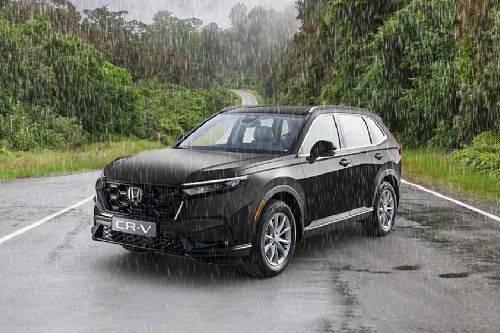
|

|
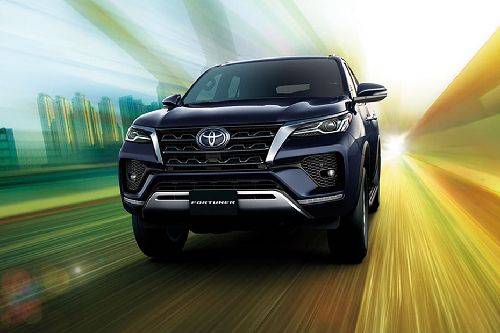
|

|
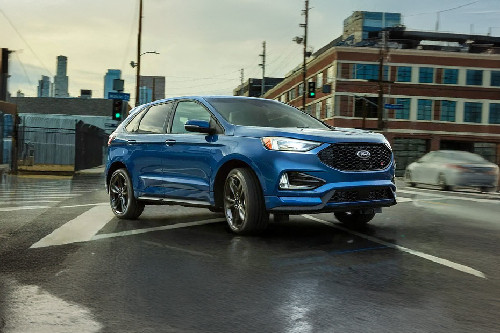
|
|
Transmission Type
-
|
AT
|
Automatic
|
Automatic
|
AT
|
|
Engine Displacement
-
|
1998
|
2698
|
-
|
2698
|
|
Power
-
|
250Hp
|
164Hp@5200rpm
|
563
|
355Hp
|
|
Torque
-
|
380Nm
|
245Nm@4000rpm
|
850 Nm
|
515Nm
|
|
|
Trending SUV
- Latest
- Upcoming
- Popular

